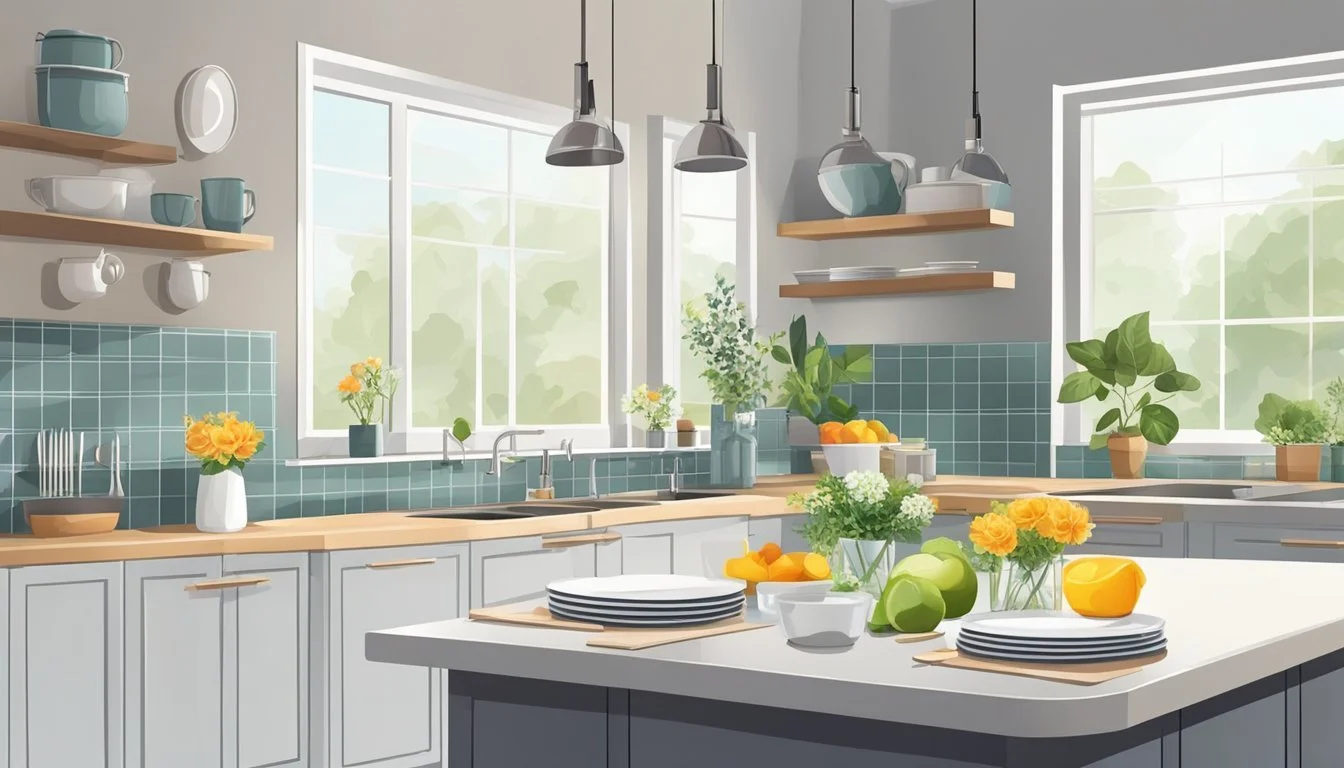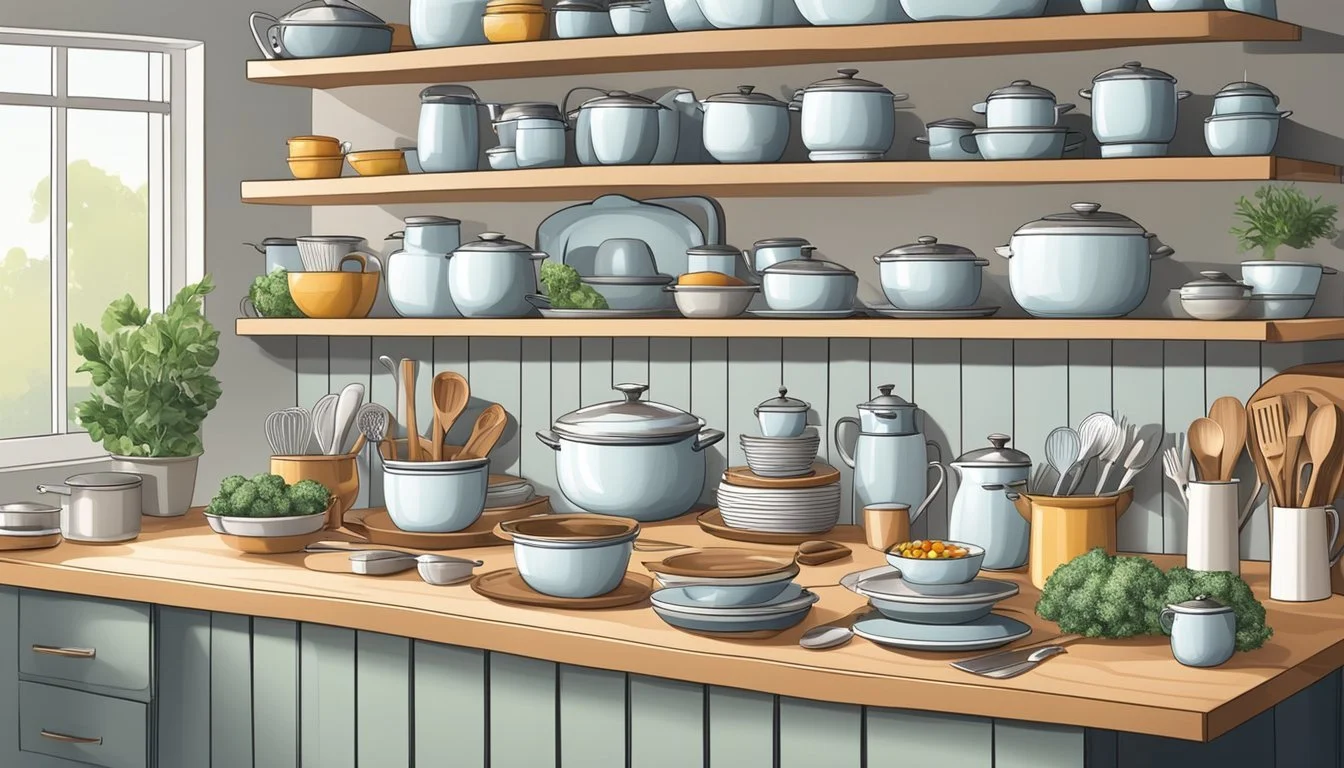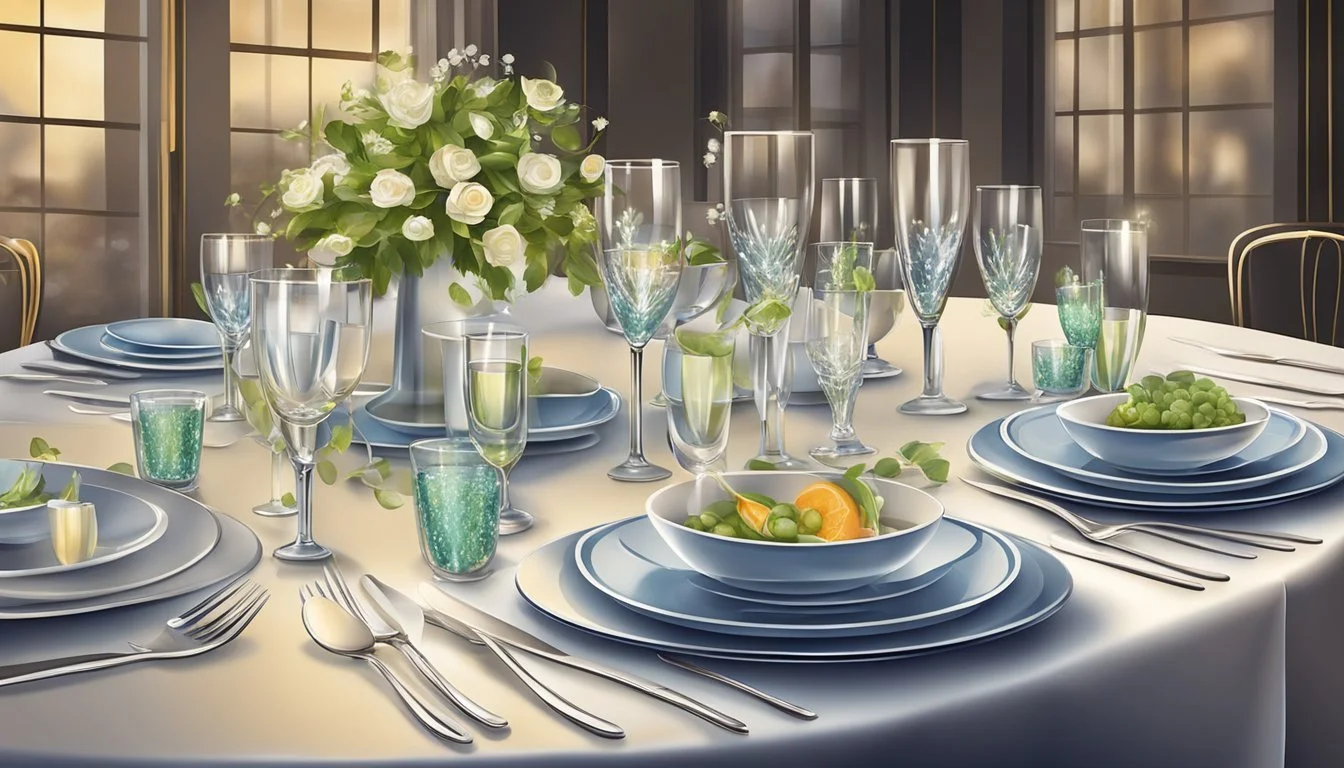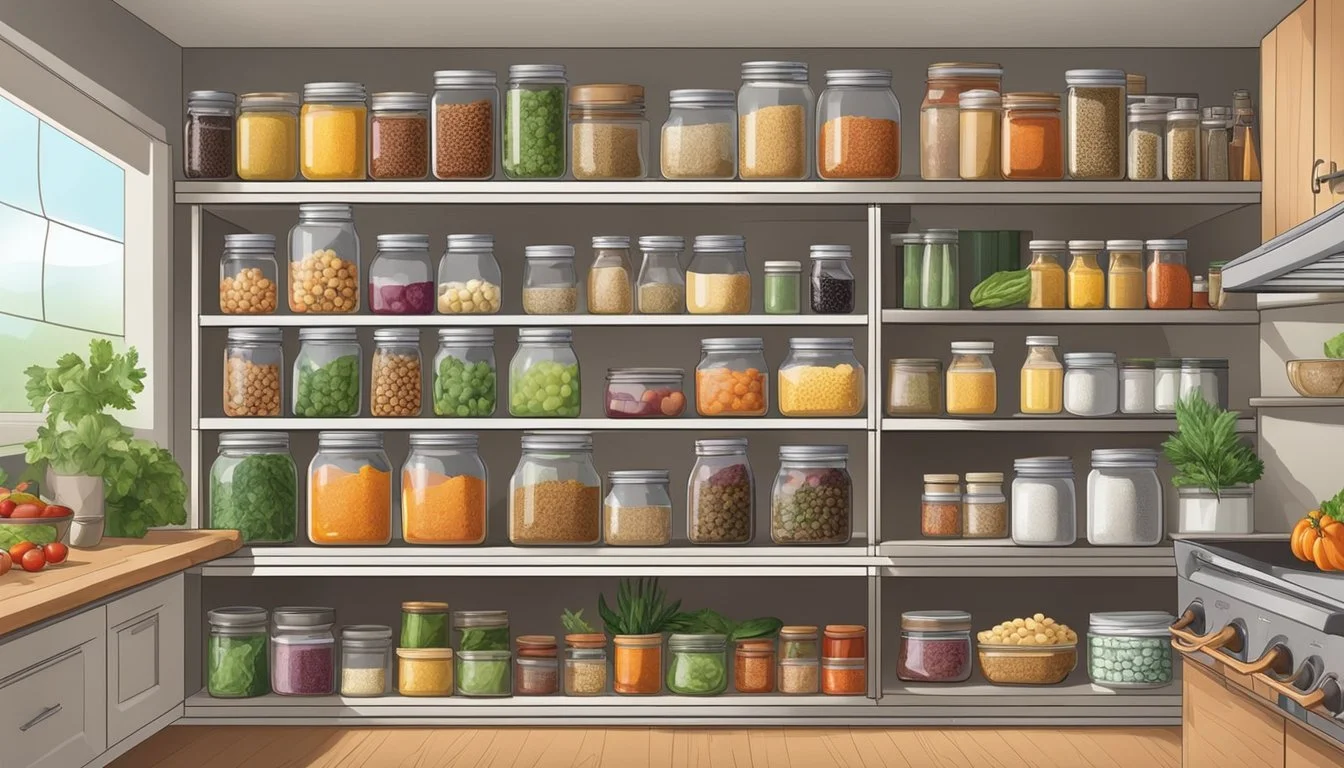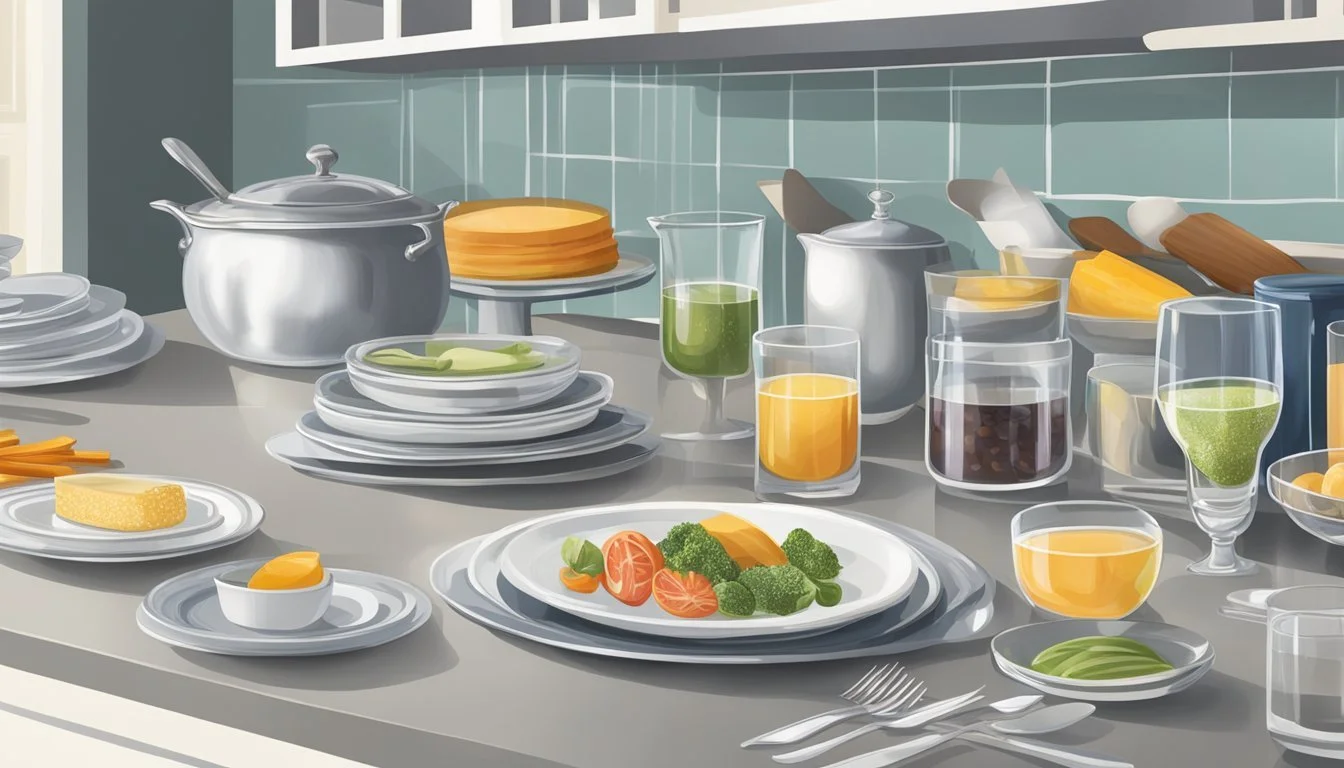Organizing Your Kitchen for a Dinner Party
Efficient Tips for a Stress-Free Evening
ips for a Stress-Free EveningWhen planning a dinner (What wine goes well with dinner?) party, the kitchen becomes the heart of the event, a hub of preparation and presentation. It's essential to organize this space efficiently to ensure a smooth transition from cooking to entertaining. The organization begins with decluttering, making sure ingredients are prepped ahead of time, and ensuring that every tool and dish has its place. This foresight not only streamlines the cooking process but also eases the stress that can accompany hosting duties.
Creating a functional and welcoming environment for guests involves thoughtful arrangement of the space. With the kitchen organized, the focus can shift to the flow of the event. This includes setting up a separate area for drinks to avoid congestion and ensuring flatware is easily accessible. Attention to these details helps in crafting a memorable and enjoyable experience for both the host and the guests.
Moreover, tackling the often-overlooked aspect of storage, like Tupperware for leftovers, ensures a seamless end to the party. By considering the needs of the event from start to finish, one can organize the kitchen in a manner that caters to both the culinary demands and the comfort of the guests. This level of preparedness is what distinguishes a good dinner party from a great one.
Planning Your Dinner Party
Successful dinner party planning hinges on two essential elements: a comprehensive to-do list and a well-considered menu. These foundational steps help ensure a stress-free experience, both in preparation and during the event.
Creating a To-Do List
A to-do list acts as the backbone of dinner party planning. It should outline tasks with corresponding deadlines to ensure nothing is overlooked. The timeline for these tasks can begin as early as a month before the event, covering all bases from cleaning to shopping. Here is a suggested structure for a to-do list:
1 Month Before: Confirm the date with guests. Choose a theme if desired.
3 Weeks Before: Plan the party flow (e.g., cocktail hour, dinner, after-dinner entertainment).
2 Weeks Before: Finalize the guest list and send out invitations.
1 Week Before: Start deep cleaning the high-traffic areas, such as the kitchen and bathrooms.
3 Days Before: Shop for non-perishable items and check your equipment (tables, chairs, dinnerware).
1 Day Before: Purchase perishable ingredients. Begin preparing any make-ahead dishes.
Day Of: Set up the dining area, finish cooking, and do a final touch-up cleaning.
Deciding on the Menu
The menu is the centerpiece of a dinner party. It should cater to the dietary preferences and restrictions of the guests without causing undue stress to the host. When determining the menu:
Balance Simplicity and Sophistication: Mix straightforward recipes with one or two standout dishes.
Consider Prep and Cook Times: Incorporate dishes that can be marinated overnight or slow-cooked to free up time on the day of the event.
Account for Service and Presentation: Plan how food will be served—family-style, buffet, or plated—and ensure you have the correct serving ware for each dish.
An example menu could include:
Appetizer: Cheeseboard with a variety of cheeses, nuts, and fruit
Main: Herb-crusted roast lamb or a vegetarian wellington
Side: Roasted seasonal vegetables and garlic mashed potatoes
Dessert: Chocolate mousse and mixed berry tart
By meticulously planning the menu and to-do list, hosts can approach their dinner party with confidence, ensuring guests enjoy a memorable experience and the host can partake in the festivity without concern over logistics.
Initial Kitchen Organization
Effective kitchen organization streamlines dinner party preparations, ensuring every essential is in place. Starting with a clean and clutter-free space, the host can focus on creating memorable dishes and experiences for guests.
Decluttering Countertops
A chef needs ample room for food prep, so one should clear the countertops of non-essentials. Small appliances not needed for the party can be stored away. Use vertical space with hanging shelves or hooks to keep necessary items within reach but off the countertop.
Organizing Pantry Essentials
The pantry should be assessed next. Non-perishable essentials like spices, oils, and canned goods ought to be at the forefront for easy access. Employing clear bins and labels can make ingredients easily identifiable. Ensure all frequently used items are at eye level.
Grains and pasta: Top shelf, grouped by type.
Canned goods: Middle shelf, categorized by use-case.
Snacks and baking items: Bottom shelf, separated to avoid mix-ups.
Sorting Drawers and Cabinets
Every utensil has its place when kitchen drawers and cabinets are properly arranged. Group similar items together; think cooking utensils in one drawer, silverware in another. Inserts and organizers can prevent overcrowding. In cabinets, use stackable shelves to optimize space, keeping dinnerware sets together and glasses neatly arranged. Leftover storage containers should have matching lids within reach to simplify clean-up after the dinner party.
Dinnerware and Table Setting
When hosting a dinner party, the selection and arrangement of tableware and the proper setting of the table play crucial roles in creating an inviting ambiance for guests. It's important to consider both functionality and aesthetic appeal when preparing these elements.
Selecting Tableware
Choosing the right dinnerware involves coordinating plates, bowls, and serving dishes that complement the theme and formality of the dinner party. For formal events, one should opt for a matching set of fine china or porcelain. Casual gatherings can be served well with more durable materials like stoneware or melamine. Glassware selection should reflect the types of drinks being served, with proper wine glasses for wine and sturdy tumblers for water or non-alcoholic beverages.
Formal: Fine China or Porcelain
Casual: Stoneware or Melamine
Glassware: Varies by Beverage Type
Arranging the Table Décor
Table décor includes centerpieces, napkins, and other ornamental items that set the mood. Aesthetically pleasing arrangements should leave ample space for dinnerware and not obstruct views across the table. For example, tea lights can offer a subtle glow without the obstruction of taller taper candles. Centerpieces like floral arrangements should be proportional to the table size and align with the overall dinner party theme.
Lighting: Tea Lights or Low-Profile Candles
Centerpieces: Proportional and Thematic
Setting the Table Properly
A properly set table has a specific order for cutlery and glassware that facilitates the dining experience. The following guidelines ensure that each place setting is consistent:
Plates: Centered at each seating position
Cutlery: Forks to the left of the plate, knives and spoons to the right; knife blades pointing towards the plate
Glassware: Positioned above and to the right of the knives
Placement Item Direction/Order Left Fork(s) Outside to Inside Right Knife, Spoon Inside to Outside; Knife blade facing Plate Above Glassware Right of Plate; Above Knives
In summary, selecting the right tableware, arranging the décor tastefully, and setting the table properly are essential steps in kitchen organization for a dinner party that is thoroughly enjoyable for all attendees.
Food and Ingredient Storage
Proper food and ingredient storage is crucial for an efficient kitchen that's ready for a dinner party. Ensuring that the refrigerator is organized and that ingredients are stored in clear containers can save time and reduce waste.
Optimizing Refrigerator Space
One should start by clearing out any unnecessary items, checking for and discarding any food that has expired. Then they can group ingredients together by type—dairy with dairy, vegetables with vegetables, and so on. This helps in knowing exactly where to find what is needed without unnecessary searching. Utilizing baskets or bins for grouping similar items can further enhance organization. For example:
Vegetable Drawer: Leafy greens in one basket, root vegetables in another.
Dairy Shelf: All cheese types in a single bin, milk and yogurt lined up next to each other.
Using Transparent Containers
Storing ingredients in transparent containers, such as glass jars or clear Tupperware, allows one to quickly identify what's inside without having to open each one. Not only does this save time, but it also maintains the freshness of the ingredients as they are less exposed to air each time. Containers should be labeled and dated. Here’s a storage strategy:
Dry Ingredients: Store rice, pasta, or flour in clear, labeled jars.
Leftovers: Use Tupperware to stack neatly, with oldest foods at the front.
By doing so, anyone in charge of cooking or setting up knows exactly where to locate what they need efficiently.
Cookware and Utensils
When preparing for a dinner party, one's kitchen must be optimized for efficiency and ease of access. Organizing pots and pans, as well as implementing drawer dividers, are vital steps for optimizing any kitchen workspace.
Organizing Pots and Pans
For pots and pans, efficient organization can save both time and effort. One might start by stacking pots and pans by size inside cabinets, keeping the most frequently used items at the front. For those with limited space, lazy susans can be employed to maximize corner cabinet accessibility. Likewise, a pegboard serves as a versatile tool, allowing one to hang cookware, which not only keeps items within reach but can also display them decoratively.
Implementing Drawer Dividers
Drawer organizers are instrumental in compartmentalizing kitchen utensils, from wooden spoons to spatulas. By categorizing utensils and using dividers within a drawer, one creates an orderly system:
Utensils such as graters and peelers: place these in compartments for easy access.
Flatware: designate a specific section within the drawer; consider using a multi-slot organizer.
Frequently used tools: allocate a space at the front of the drawer for quick retrieval.
Such organization ensures every tool is easily findable and can make the overall dinner party experience smoother for the host.
Efficient Kitchen Layout
When organizing a kitchen for a dinner party, a homeowner should focus on creating a layout that maximizes efficiency and available space. Strategic use of wall and cabinet space, along with smart storage solutions, can make a small kitchen function like a larger one.
Utilizing Wall and Cabinet Space
In a small kitchen, wall space is prime real estate. Installing shelving or hooks on walls can help keep countertops clear and items accessible. Use the vertical space afforded by walls to store pots, pans, and utensils. Additionally, optimizing upper cabinetry can make a significant difference. Homeowners can maximize upper cabinet storage with stackable shelves and under-shelf baskets, which provide extra layers of organization without cluttering the kitchen countertop.
Incorporating Pull-Out Storage
Pull-out storage solutions are essential for making the most of hidden storage areas in the kitchen. These can include pull-out spice racks, trash and recycling bins, and pantry shelves. They allow easier access to items that would otherwise be hard to reach in the back of cabinets. Pull-out corner units and lazy susans can also be used to utilize corner cabinet space fully, turning a potential dead zone into useful storage.
Maintenance and Upkeep
Effective maintenance and upkeep in a kitchen are critical for ensuring that everything runs smoothly during a dinner party. It involves establishing a regular cleaning regimen and revisiting the inventory to keep essentials stocked and redundant items minimized.
Regular Cleaning Schedule
A consistent cleaning schedule prevents last-minute rushes before guests arrive. One should clean high-use areas daily, such as countertops and stoves, while deep cleaning tasks, like the refrigerator, can be done monthly. It is helpful to label areas or items with their cleaning frequency to avoid oversight.
Daily: Wipe down surfaces, sweep floors, clean dishes.
Weekly: Mop floors, scrub appliances' surfaces.
Monthly: Deep-clean the oven, clear and sanitize the refrigerator.
Assessing and Refreshing Inventory
Regularly assessing kitchen inventory is key to efficiency. Items should be evaluated for their frequency of use. Those that are seldom used can be tossed or stored away to free up space for essentials. Conversely, frequently used items should be kept within easy reach. Labeling shelves and containers is not only neat but also time-saving, as it helps in quickly identifying contents.
Keep: Items used weekly.
Toss: Duplicates, broken utensils, expired goods.
Refresh: Periodically replace staples and update your inventory list.
Additional Tips for Hosting
In the realm of dinner party hosting, paying heed to expert advice can simplify the process and enhance the experience. Maintaining a stress-free environment is integral to creating an enjoyable atmosphere for both guests and the host.
Listening to Expert Advice
Experts like Ina Garten emphasize the importance of preparation and organization. They suggest grouping like items together to streamline the cooking process. This might include dedicating zones for food prep, cooking, and serving. Having everything within arm's reach reduces the frequency of searching for items and allows hosts to focus on engaging with their guests. For instance, keeping all necessary utensils for salad prep on a single tray will make it easier when it's time to toss and serve.
Ensuring a Stress-Free Environment
Creating a relaxing environment for guests is crucial for an enjoyable experience. A host's demeanor can set the tone; by remaining calm and organized, one can encourage their guests to feel at ease. Experts recommend setting up the dining and entertainment areas well before guests arrive to minimize last-minute hustles. An organized kitchen, with a clean workspace and a clear plan of action, will help in maintaining a serene environment throughout the event. Additionally, providing a small treat or welcome drink upon arrival can make guests feel immediately welcomed and catered to.
Final Touches
In the final stages of preparation, giving attention to personal touches and a thorough checklist review can transform a dinner party from good to great.
Adding Personal Elements
One can enhance the ambiance of their dinner party by strategically placing plants to add a touch of nature and freshness to the apartment. A well-curated selection of cookbooks displayed on DIY shelving can spark conversations among guests and showcase the host's culinary interests. Additionally, a chalkboard with a handwritten menu not only informs guests of the upcoming courses but also adds a personal and creative touch to the dining space.
Reviewing the Dinner Party Checklist
With the timeline winding down, reviewing the checklist ensures that nothing is overlooked. Below is a sample checklist for reference:
Appetizer: Ensure appetizers are ready to serve before guests' arrival.
Dessert: Desserts should be prepared ahead of time or chosen for their ease of last-minute assembly.
Dish Drying Rack: Clear the dish drying rack to avoid clutter and provide space for any dishes used during the party.
Timeline: Cross-reference the dinner party timeline to verify all tasks are complete or appropriately delegated.
By attending to these details, the host is set to deliver an organized and memorable dinner party.

